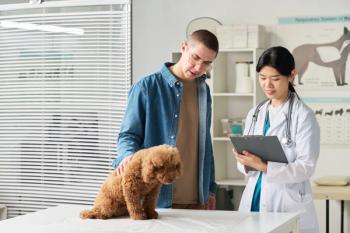
How to prevent hypothermia
You may know these tips, but do you follow through?
When pets are cold, it takes them a longer time to recover from anesthesia. But Pamela Stevenson, CVPM, management consultant and owner of Veterinary Results Management in Durham, N.C., estimates that only 60 percent of practices monitor their patients' temperatures. And of those that do, only 50 percent have warming protocols in place.
Be sure you're doing your part to help keep pets comfortable and safe. Cozy up to these hot tips.
- Use bubble wrap—not too tightly—to go around or cover the trunk and any extremities not being worked on.
- Place socks or booties on patients' extremities.
- Warm IV fluids to an animal's body temperature by using a fluid warmer.
- Don't lay patients directly on the table or floor. Use towels, blankets, or warming devices underneath them.
- After the procedure, check the patient's temperature at least every 15 to 30 minutes until it returns to normal.
Newsletter
From exam room tips to practice management insights, get trusted veterinary news delivered straight to your inbox—subscribe to dvm360.





